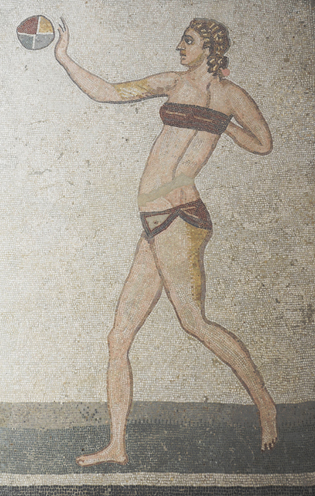Bathing is a pleasure
Since the Greeks and the invention of thermal baths, in addition to its curative and hygienic function, bathing as a social practice has often been associated with the pleasures of play, the table, love and worship of the body.
"One of the oddest affectations of pleasure-seeking bathers is the hanging bath, taken in a metal bathtub fitted with four heavy rings to which are attached chains hanging down from the roof of the bathhouse. As soon as the bather is in the water, he is lifted along with the bathtub, which is often very large, and left hanging like a chandelier; slaves swing him as quickly or as slowly, as high or as low, as violently or as softly as he orders, for as long as his bath takes. This invention dates from the middle of the last century. The Romans found it so wonderful that they cite the name of the inventor, a certain Sergius Orata, who did his utmost to provide hanging baths in villas, which he then sold on at a profit, so successful was his invention!"
Extract from Rome in the Age of Augustus, or A Gaul's journey to Rome during the reign of the Emperor Augustus and part of the reign of Tiberius, by Charles Dezobry.
Read his chapter on the baths (in French)
[http://remacle.org/bloodwolf/livres/desobry/des3.htm]
It was an art of living popular throughout the Roman Empire: Cluny in France, Bath in England, Aachen in Germany, Leptis Magna in Libya and so on. Some thermal baths could accommodate several thousand people!






















